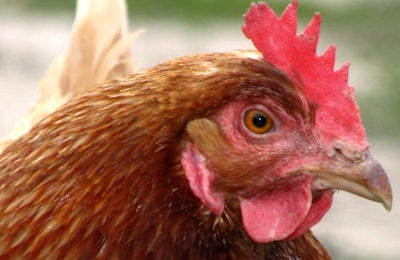
A strain of the highly pathogenic avian influenza (HPAI) virus that is new to the country has been detected in a duck flock in Egypt, while Namibia and India have reported new cases in wild birds, and Italy counts the cost of the 2016-2017 poultry epidemic.
As a result of routine surveillance, the H5N2 variant of the HPAI has been found at a duck farm. According to Egypt Today, this appears to be the first time this subtype has been detected in the country.
The location of the affected farm is not given, but the report mentions that quarantine measures have been put in place, infected and dead birds have been removed, and cleaning and disinfection has been carried out. For 21 days, surveillance of the area near the farm will be intensified.
The source of infection at the farm is uncertain. It was reported not be “abiding by precautionary rules.”
Deputy Agriculture Minister Mona Mehrez has reminded poultry farmers of their obligation to have their birds tested before they sell them to the public. He also said existing vaccines against the H5N1 subtype are effective against the new variant.
Egypt’a agriculture ministry refers to the virus as “a new strain of bird flu H5N2,” and not a mutation of the H5N1 variant.
Avian Flu Diary offers two possible explanations for the origin of the virus. It is likely either a product of the continual evolution of HPAI H5N8—which is known to be present in Egypt— or the result of a reassortment of that strain with HPAI H5N1 and/or low-pathogenic avian influenza (LPAI) virus such as H9N2 or some other local subtype.
There has been one new outbreak of HPAI linked to an H5N2 virus in Taiwan, according to the latest report from the Council of Agriculture to the World Organisation for Animal Health (OIE). This involved a flock of almost 32,000 native chickens in the town of Yanpu in Pingtung county.
First detected in Taiwan in early 2015, this the second outbreak linked to this virus in the county so far this year. The disease was confirmed after around 470 of the birds died. The farm has been depopulated and thoroughly cleaned, and poultry in the area will be under intensive surveillance for three months.
New cases of HPAI in wild birds in India, Namibia
Wild birds found dead at two new locations in the state of Jharkhand have tested positive for the H5N1 HPAI virus, according to the latest report from India’s agriculture ministry to the OIE. The birds — all wild crows — were found in Ranchi and Palojori.
The death toll among penguins on Halifax Island in Namibia has risen to more than 500, reported The Namibian recently.
The H5N8 HPAI virus was detected for the first time in the southwest African state in early February. So far, it has only been reported in penguins at that location. The state of health of wild birds on neighboring islands is unknown.
Low pathogenic avian flu detected in Danish layers
A nationwide surveillance program has led to the detection at the end of last month of an H5 type LPAI virus in an organic layer flock at Terndrup in the municipality of Rebild in northern Jutland.
According to the agriculture ministry’s report to the OIE, around 7,000 hens are affected, and all are scheduled for culling to prevent further spread of the virus.
Poultry movements within one kilometer of the affected farm are banned, according to the Danish Veterinary and Food Administration, and owners of all hobby poultry within that area are required to register with the agency within a week.
LPAI viruses were last detected in Denmark in June of 2018.
Perspectives on the 2016-17 HPAI outbreaks in Italy’s poultry sector
The HPAI epidemic in 2016-2017 was Europe’s largest for more than a decade, according to Italian health authority and research organization for animal health and food safety, IZSVe. With more than 1,200 outbreaks, it caused high levels of mortality and financial losses.
Italy alone lost 2.7 million domestic poultry to the disease at 83 farms, and measures to control the disease are estimated to have cost EUR40 million (US$45 million at current exchange rates).
Among the greatest challenges, according to IZSVe, was achieving a timely response to outbreaks in terms of control strategies and their application.

















